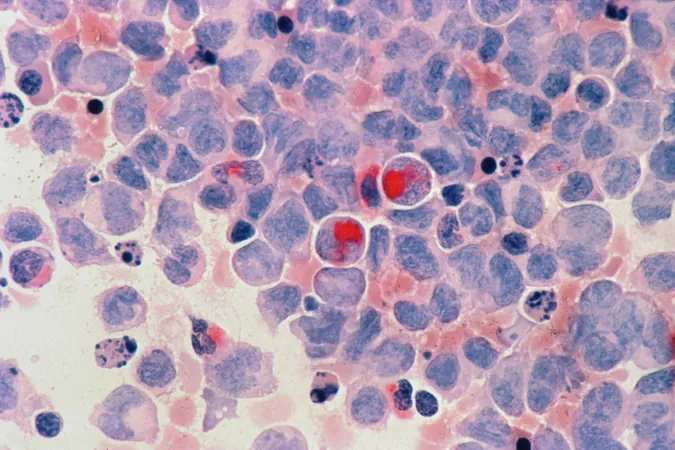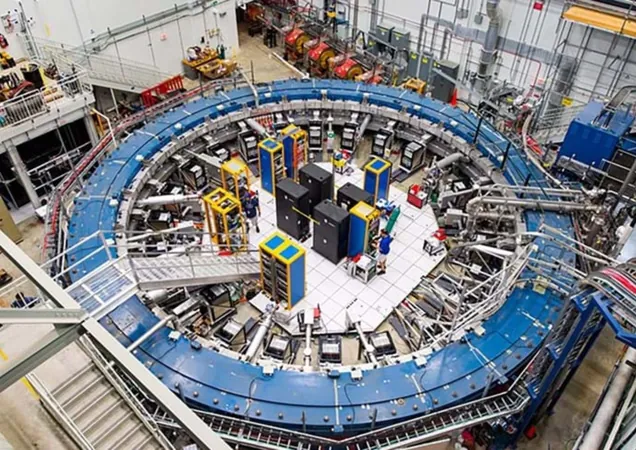
Unlocking the Mysteries of Acute Myeloid Leukemia: A Breakthrough Single-Cell Atlas
2025-04-30
Author: William
Revolutionary Insights into Blood Development and Leukemia
Researchers at the Princess Margaret Cancer Center have unveiled a groundbreaking single-cell atlas that sheds light on the complexities of acute myeloid leukemia (AML). This new resource enhances our understanding of how leukemia forms and offers more accurate classifications of acute leukemia cases.
The Challenge of Diverse Cell Populations
Despite ongoing therapeutic efforts, AML presents unique challenges due to its diverse and often unstable cell populations. While previous studies have explored how specific genetic mutations impact normal blood cell development, a comprehensive understanding of how these mutations influence disease behavior across various AML cases has remained elusive.
A Comprehensive Analysis Unveils Hidden Patterns
To tackle this challenge, the study titled "Single-cell Transcriptional Atlas of Human Hematopoiesis Reveals Genetic and Hierarchy-Based Determinants of Aberrant AML Differentiation," published in Blood Cancer Discovery, presents a detailed analysis designed to reveal how AML disrupts blood cell development. The researchers mapped 1.2 million cells from 318 acute leukemia samples against a reference atlas of healthy blood development, drawn from over 263,000 single-cell transcriptomes of 45 healthy donors.
Discovering Distinct Hematopoietic States
The study identified a total of 55 unique hematopoietic cell states. By grouping related states into 13 broader differentiation categories, researchers facilitated comparisons across various leukemia samples. Notably, they uncovered 12 recurrent differentiation patterns within the patient data, which showcased early developmental blocks and lineage-specific tendencies toward myeloid, lymphoid, and erythroid fates.
Adult vs. Pediatric AML: Distinct Differentiation Patterns
The analysis revealed that adult AML cases were more prone to primitive stem-like differentiation patterns compared to pediatric cases, which exhibited more monocytic differentiation. Over 45 distinct mutations were linked to specific differentiation pathways, highlighting the disease's complexity where samples sharing identical genetic drivers often displayed vastly different developmental landscapes.
Crucial Implications for Patient Prognosis and Treatment
In an intriguing finding, adult patients with leukemia appearing genetically normal faced significantly higher mortality risks if their cancer cells resembled early lymphoid progenitor cells, increasing their risk of death by approximately 65% with each standard deviation rise in these cells. Conversely, those whose leukemia displayed traits of early red blood cell development had a 37% reduced death risk.
Promising Drug Responses and Future Directions
Laboratory tests revealed that leukemia cells with strong lymphoid characteristics were more responsive to 23 treatments, including 18 receptor tyrosine-kinase inhibitors. Remarkably, one drug, midostaurin, demonstrated effectiveness irrespective of its usual connection to the FLT3 mutation, suggesting broader applicability for a wider patient demographic.
A New Era for AML Classification and Treatment Strategies
This innovative single-cell atlas has the potential to revolutionize AML care by refining patient stratification, enhancing diagnostic precision, and guiding personalized treatment strategies. With these findings, researchers are poised to identify high-risk leukemia subtypes and uncover new treatment vulnerabilities, moving beyond traditional genomic classifications.









 Brasil (PT)
Brasil (PT)
 Canada (EN)
Canada (EN)
 Chile (ES)
Chile (ES)
 Česko (CS)
Česko (CS)
 대한민국 (KO)
대한민국 (KO)
 España (ES)
España (ES)
 France (FR)
France (FR)
 Hong Kong (EN)
Hong Kong (EN)
 Italia (IT)
Italia (IT)
 日本 (JA)
日本 (JA)
 Magyarország (HU)
Magyarország (HU)
 Norge (NO)
Norge (NO)
 Polska (PL)
Polska (PL)
 Schweiz (DE)
Schweiz (DE)
 Singapore (EN)
Singapore (EN)
 Sverige (SV)
Sverige (SV)
 Suomi (FI)
Suomi (FI)
 Türkiye (TR)
Türkiye (TR)
 الإمارات العربية المتحدة (AR)
الإمارات العربية المتحدة (AR)